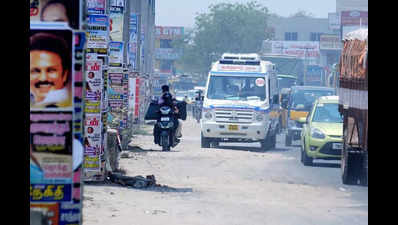Marking ‘super-hotspots’ helps save time and lives – The Times of India

Chennai: A stitch in time saves nine. That’s why 150 accident “super-hotspots” have been identified in Tamil Nadu and systems tweaked to ensure ambulances reach in time. These spots often require more than one ambulance during peak hours, that is between 5pm and 10pm.
One hour and 20 minutes is the average turnaround time for an ambulance to reach the victim, assess and offer first aid, pick up, transport to hospital, and return to its station. The problem arises when there are accidents back to back in an area, which is what happens at the super hotspots. The top four super-hotspots are Koyambedu and Maduravoyal in Chennai, where three accidents are reported back to back, Coimbatore’s Sai Baba temple junction and Trichy’s Palpannai junction.
“Ambulances are positioned using an algorithm based on factors such as number of accidents, space availability, and traffic density,” said M Selvakumar, head of GVK-EMRI Green Health Services, which manages 108 ambulance services and identified the hotspots. The problems in each of these hotspots are different and require tailor-made solutions.
For instance, the Integrated Road Accident Database (iRAD) a centralised Indian webpage that analyses accident data to identify trends and hotspots showed the 2-km radius around Koyambedu junction remained a hotspot for several weeks. There are three ambulances one each at Tirumangalam, CMBT, and Koyambedu metro within a 2-km radius. “Yet, we can’t move any of these ambulances to the junction because they are hotspots too. So, we added an ambulance at the junction,” Selvakumar said.
At Maduravoyal, ambulances from Porur or Vanagaram were kept on standby during peak hours. If the Maduravoyal ambulance is not free, the call centre contacts those at Porur or Vanagaram, whichever is closest to the accident spot. “This cluster model in super-hotspots has helped us reach patients early,” he said. Health secretary Supriya Sahu said the aim is early first aid and treatment for patients.
To save time, technicians use software to triage patients, and those with head, neck or severe bleeding abdominal injuries, are taken to the nearest hospital under the ‘Inuyir Kappom Nammai Kakkum 48′ scheme. “We managed to bring down accident deaths because of early treatment,” said health minister Ma Subramanian. Now, at least 700 hospitals are empanelled to provide treatment under the scheme.
The overall impact is now visible, Selvakumar said. The response time the time taken by an ambulance to reach the accident site after receiving the call fell to 11.17 minutes in 2024 compared to 13.46 in 2021. The time it takes for an ambulance to reach hospital has also come down to an average of 18.01 minutes compared to 19.45 minutes in 2023 and 21.50 minutes in 2022.
















